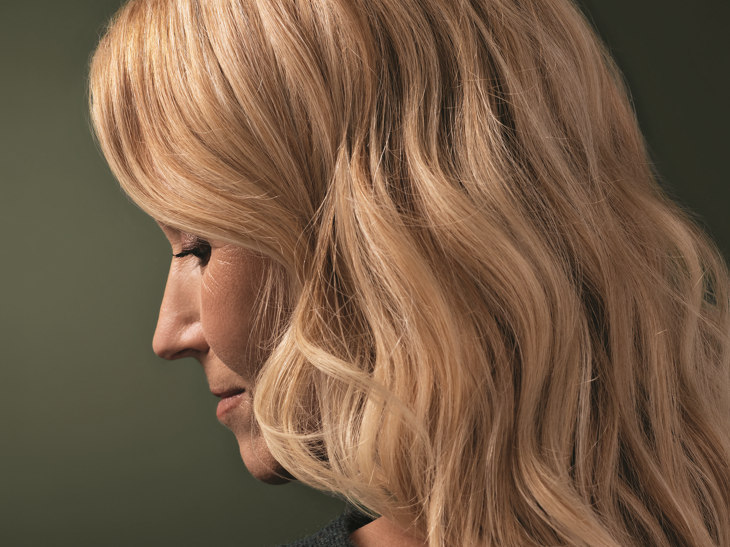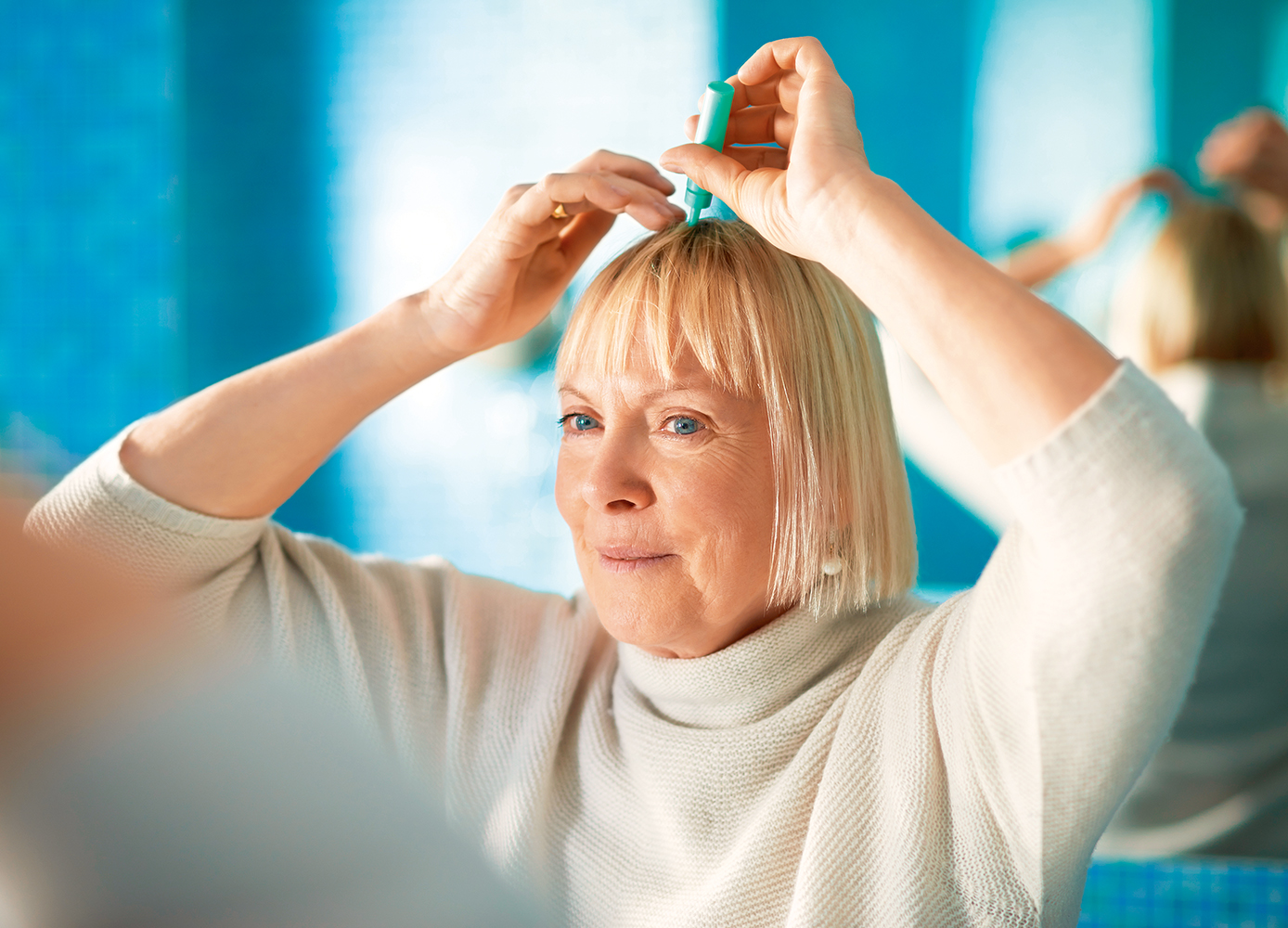You can have beautiful hair, whatever changes the years may have brought
By Lola Augustine Brown
Photo: iStock/jacoblund.
We consulted with experts to get the best advice on how to love the hair you have and help it look its best.
Thin and Thinning Hair
“As your hair thins, you need to change the way your hair is cut, going for more solid lines, which create a feeling of higher density. You don’t want to layer too much—short layers especially are going to show more of your scalp,” says Jean Tremblay, the regional education manager for Wella Canada. “You may need layers to help with the shape of your hair, but not to the extent of compromising density.”
For Toronto-based freelance hair stylist Allison Kam, thinning hair is the biggest concern her male clients have. “I’ve had men try to cover it up or use products such as Rogaine to try to stop the thinning, but I think that with both male and female clients, what’s key is reassuring them that they can still look really amazing even if their hair is thinning,” she says.
There’s a range of great products available that will help add volume to your hair, from thickening shampoos and conditioners to styling creams and treatments that’ll leave hair looking sleek, gorgeous, and fuller.
Vichy’s Dercos Technique Densi-Solutions has a shampoo and thickening balm (a leave-in conditioner) that add volume ($22.95 each) and a “Hair Mass Thickening Concentrate” for extra fullness ($39.95).
Greying Hair
As our hair loses pigmentation, it isn’t just the change in colour that we have to deal with, but a change in texture that can mean we need to learn to style it differently.
“The first thing you need to do is change your shampoo and conditioner to a formulation that will help with the dryness,” says Annie Fournier, a stylist and co-owner of Studio Mademoiselle in Gatineau, QC. “I’d also recommend using a hair oil such as Kevin Murphy’s Young Again, which is a leave-in treatment that is deeply moisturizing for the hair.” You can find this product in salons for around $60, but it also comes in a travel size, so you needn’t lay out too much money to try it. Worried about oil making your hair greasy? Don’t be. Modern oils in beauty products are light and work wonders.
There’s no stopping the greys once they start coming in, so you need to learn to work with the changes in texture. “Some grey hairs will come in curly, or very straight, and not the same thickness—they don’t follow the rest of your hair,” Fournier says. “Your hairdresser is going to help you manage that. Don’t pluck them out, though; it will make texture problems even harder to deal with.”
Tempted to dye the grey away? You might be better off embracing it, or at least working with it even if you do want to colour your hair. “A lot of people have beautiful grey hair, and young people are paying to have their hair made that colour,” Fournier says, though she admits that most of her male clients just want to get rid of the grey—she tells them to keep it because it’s sexy. “Your stylist can put a nice rinse through to enhance the colour, but I wouldn’t advise that men use a home hair colour to erase the grey as it can look very dark and not at all natural.”
Kam agrees, saying that softening the colour we have is the best option as we get older. “Adding some softer highlights around the face or lightening your base a little bit is much nicer, and that way, the regrowth is easier to handle—you aren’t a slave to getting your hair done as soon as the white roots come in.”
Limp Hair
If your hair has lost its natural oomph, there are a couple of ways you can tackle the problem.
“The first thing that I tell my clients is to take care of themselves internally with the food that they eat and the things they drink in order to support their skin and hair,” Kam says. “I love hair products, but everything comes from inside our bodies first. Take in more vitamins and fatty acids, and that’s going to show in your hair.”
You might be tempted to perm your hair to give it more life, but you need to be careful. “A perm can help bring more texture to very fine hair, but we need to be careful, as a perm solution can be damaging. We need to ensure that processing time is short and we use bigger rollers,” Tremblay says.
You may be better off with a haircut that adds texture and shape. “This can give the illusion of fuller hair, and a customized colour can help add shine and dimension to dull hair,” says Marie Meeks, a stylist and the owner of Blunt Hair Studio in Kingston, ON, “and investing in good products is always necessary.” Meeks is a big fan of Bumble and Bumble, which has products for every hair problem.
Chemically Damaged Hair
It’s an unfortunate truth that most of the things we do to make our hair look great cause some amount of damage, whether we dye it, perm it, straighten it, or just get a bit heavy-handed with our hair dryer. These things cause hair a lot of stress and damage. Finding a look that requires less heat-styling is a great preventative, but you can repair damage that’s been done, too.
Tremblay says that his first recommendation to clients is always an in-salon treatment such as WellaPlex, which rebuilds the bonds in the hair to leave it stronger and smoother. “At home, I’d recommend using one of the nourishing hair masks that Wella has designed to replenish dry and stressed hair,” he says. The new Nutri-Enrich line has a “Deep Nourishing Mask” ($18.50) that does the job perfectly, as well as shampoo, conditioner, and styling products designed for dry and chemically treated hair.
The chemicals we intentionally put on our hair aren’t the only ones that cause damage. “Many of us take up swimming as we get older, and pool chlorine can really dry out our hair,” Fournier says. “I advise using a deep conditioning treatment every week to help combat this.”
Post-Cancer Hair
Hair loss is one of the great indignities of cancer treatment, and dealing with the hair that you get as you recover can be tricky.
“The hair can grow back completely different—you might have had soft waves and now have wiry and curly hair,” Kam says. “What’s key is finding a stylist who can give you a fun look that works with your new texture, and who can help you find a style that makes you feel great about how you look and represents who you are now. This is a really deep, emotional thing that can affect your confidence, so find someone who can work with that.”
As your hair grows back, you have a lot of interesting stages to work through with your stylist. “I teach my clients how to style their hair in a way that isn’t overwhelming, and find easy, gentle styles that will make them feel good,” Kam says.






